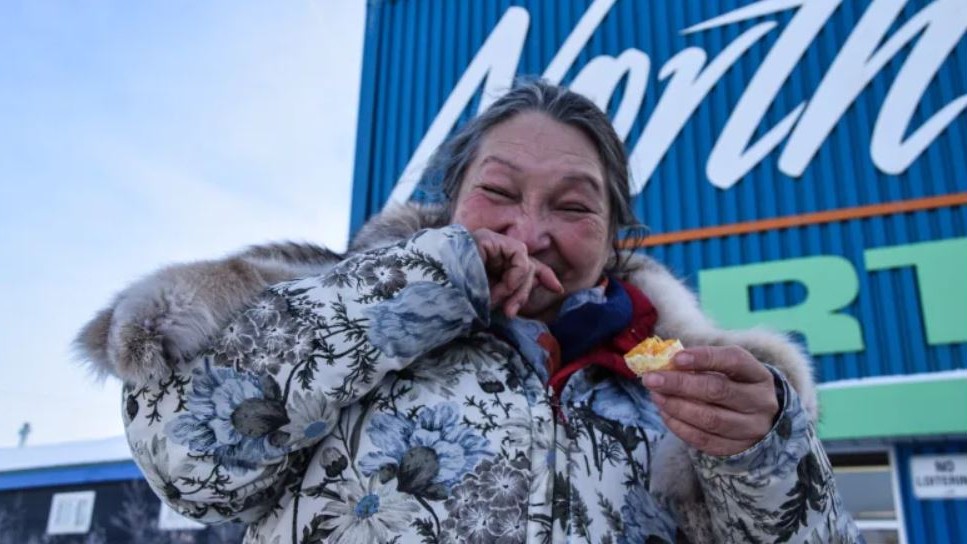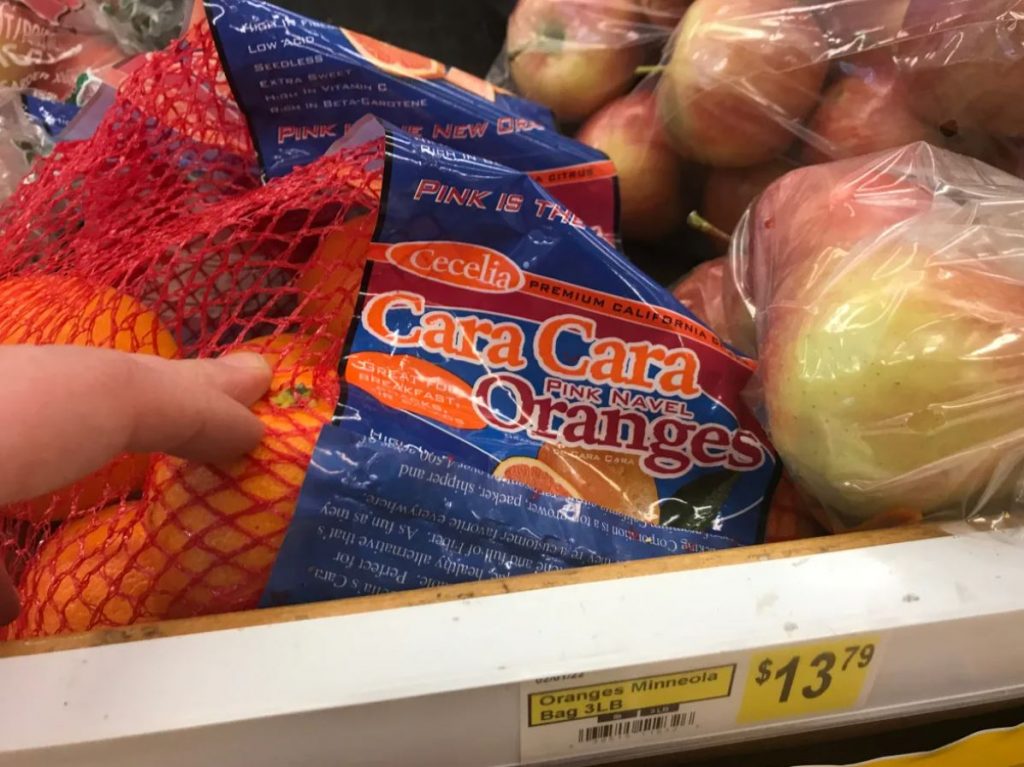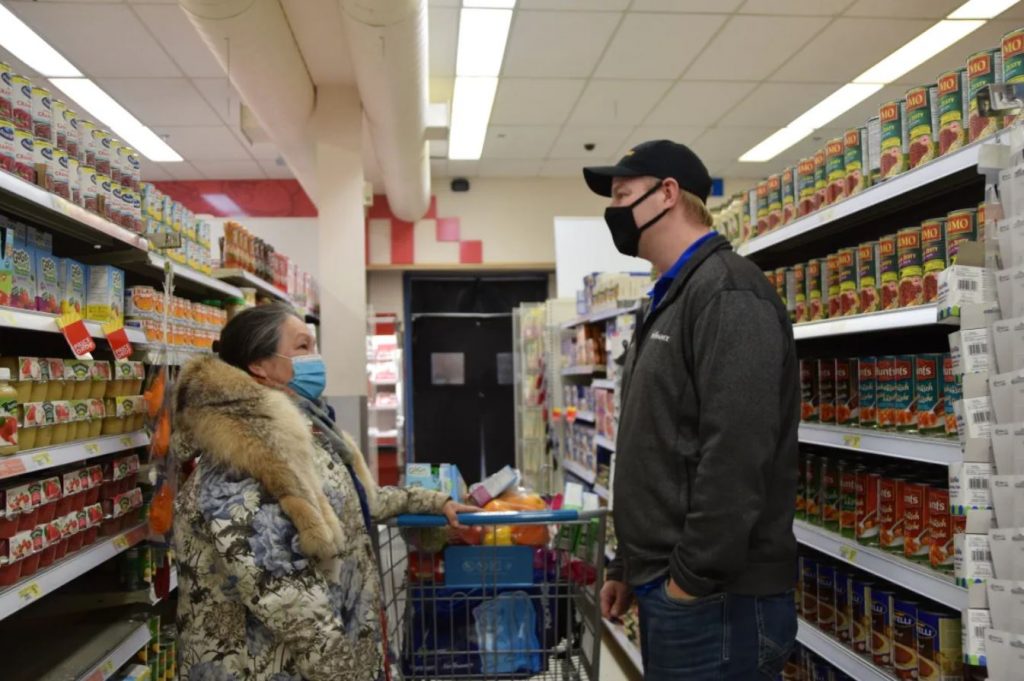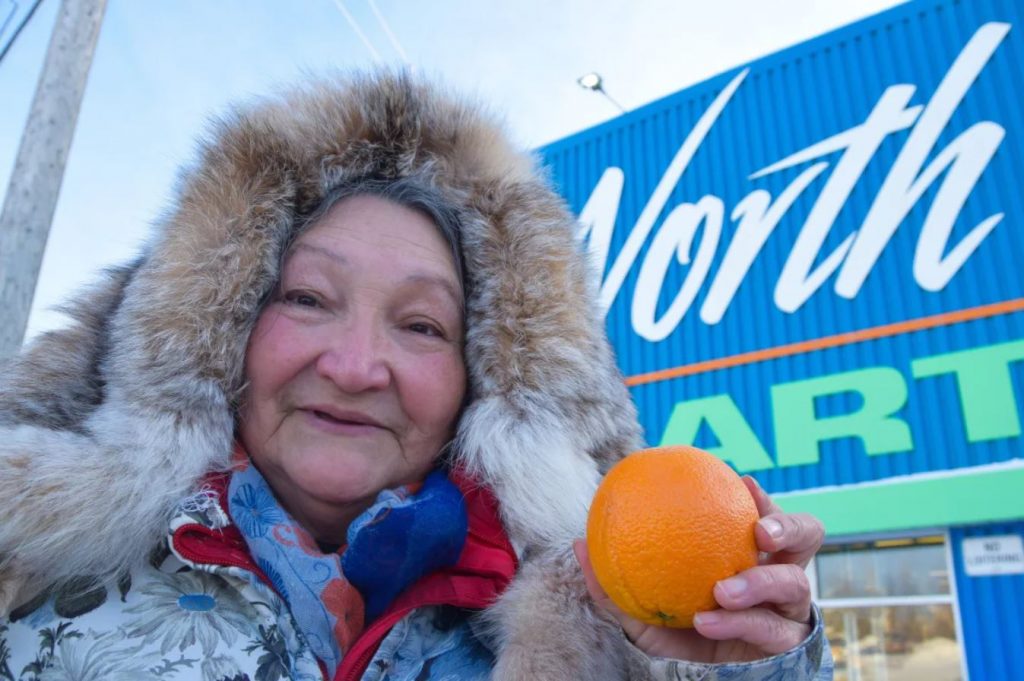An orange’s journey from the orchard to the Arctic highlights food insecurity in the North

As a child, Ruth Wright loved oranges so much that she’d trade candy for them — a treat she rarely got in the Northwest Territories, outside of her stocking on Christmas morning.
Now an elder in the Inuvik Gwich’in community, Wright pays between $1.50 to $3 for one orange, knowing the fruit travelled roughly eight days and more than 6,000 kilometres to reach her.
The cost of most fruit and vegetables in Arctic grocery stores is exponentially higher than in Canada’s southern communities, rising even more alongside the price of gas. To investigate the factors affecting food security in northern areas amid rising inflation, CBC Radio tracked the journey oranges take from California to the Arctic, including the costs that add up along the way.
The price of an orange
Over the past year, the price of an orange at Inuvik’s NorthMart grocery store rose about eight to 10 per cent.
In 2020, a kilogram of oranges would set you back $7.97. Last week, meanwhile, Wright paid $13.79 for a 1.3-kilogram bag — which she said worked out to about $1.95 per orange.
So when “southerners” complain about the price of groceries, Wright laughs.
“If they came up here, they would just collapse”, she said.
A basket of groceries that cost $186 in Edmonton would cost 81 per cent more in Inuvik. That means a northern family would pay $337 for that same basket, according to figures provided by Jeff Barichello, an economic statistician with the Northwest Territories Bureau of Statistics.

What drives the costs?
Inflation has been driven by everything from the pandemic to the Russian invasion of Ukraine, which has spiked global fuel costs — a major factor in transporting food the extra distance to the North.
Grocery managers who spoke to CBC Radio say they try to absorb cost spikes, drawing on a federal government grant that pays $1 for every kilogram of food sold during periods when the roads are not passable and they have to fly goods in.
There are 121 isolated northern communities eligible for the federal Nutrition North Canada subsidy, which means they’re considered food insecure as roads cannot always connect to these remote areas year-round.

“We are very cognizant of costs,” said Garth Hay, category manager of produce and bakery at The North West Company. “We want to make sure that we keep products as affordable as we can.”
Where the journey begins
The orange’s journey to Inuvik begins when it’s plucked from a tree in California, usually from an orchard between Fresno and Bakersfield in the San Joaquin Valley.
In the off-season, the oranges might come from as far away as Mexico or South American countries, including Brazil, Chile, Peru or Argentina.
Once picked, the fruit gets driven to processing plants where it’s cleaned and sorted by size and grade.
Ugly oranges become juice. The blemish-free fruit are packed in 18-kilogram boxes, which then get loaded onto a truck in Los Angeles.
Four days later, they’ll arrive at the Edmonton distribution centre.
But the journey is only half over.
In Edmonton, the oranges are wrapped in brown construction or kraft paper to keep them warm and the truck is temperature controlled to ensure the fruit stays at about 38 C.

Those trucks head toward Whitehorse, Yukon, then toward Dawson City, before the turn to Inuvik. During that four-day trek, the rig can encounter ice roads, gravel or frozen rivers where the ice is too thin for trucks and too thick for ferries.
During the nine weeks of winter freeze and about six weeks of spring thaw, groceries must be driven to Yellowknife and then flown into Inuvik.
“Over a journey that long, there are challenges from weather or traffic accidents — but the most problematic is the river crossings,” said Justin Jones, manager of the hub and local delivery options at The North West Company.
From California to ice roads
Alex Debogorski has driven over ice roads for decades, and he said it’s sometimes a risk to life to deliver produce to Inuvik.
It’s a cold job that requires long underwear “so the wind doesn’t do you in,” he said.
A delivery that includes oranges would be driven from Edmonton to Whitehorse, then north from Whitehorse to Dawson City — all the way up the often treacherous Dempster Highway with its 700 kilometres of gravel.
After the risky and sometimes harrowing trip, the truck arrives in Inuvik.

Everyone who meets it hopes the oranges haven’t frozen; trucks are sometimes delayed by up to five days, store manager Kevin Giesbrecht says.
“Sadly, [oranges] have gotten too cold and they are little frozen balls.”
But if fortune smiles, and the orange arrives intact, it’s put on display.
There, Giesbrecht used to show fruit off to school children on field trips. He hopes that he can do that again, as COVID-19 restrictions are lifted.
“There’s this generation of kids who might have not tried some fruit,” he said. “It’s quite upsetting.”
Orange delivered
Wright still thrills at the tart-sweet gush from a fruit that brings memories rushing back of Christmas mornings. Having an entire orange to herself still makes her feel “rich,” she says.

When oranges are scarce, the Inuvik elder refuses to fret.
“You have to get used to what you’ve got,” she says. “If this is what you got — you can only have oats every morning — then we’ll have oats every morning and enjoy it.”
Written by Yvette Brend. Produced by Danielle Nerman.
Related stories from around the North:
Canada: Access to affordable housing a challenge in Northern Canadian cities, CBC News
Finland: Finnish GDP growth slows, inflation and employment edge up, Yle News
Norway: Russian sanctions are good business for Norwegian Oil Fund, The Independent Barents Observer
Russia: Population dropping in Northwestern Russia, The Independent Barents Observer
Sweden: Will Sweden scrap state pensions for thousands now living in Finland?, YLE News
United States: New farm bill program aims to fight food insecurity in Alaska, Alaska Public Media



